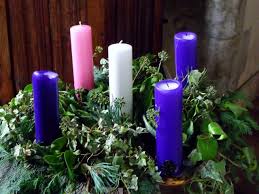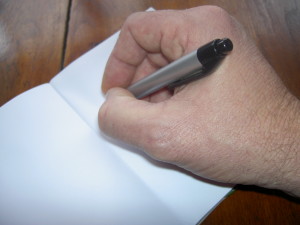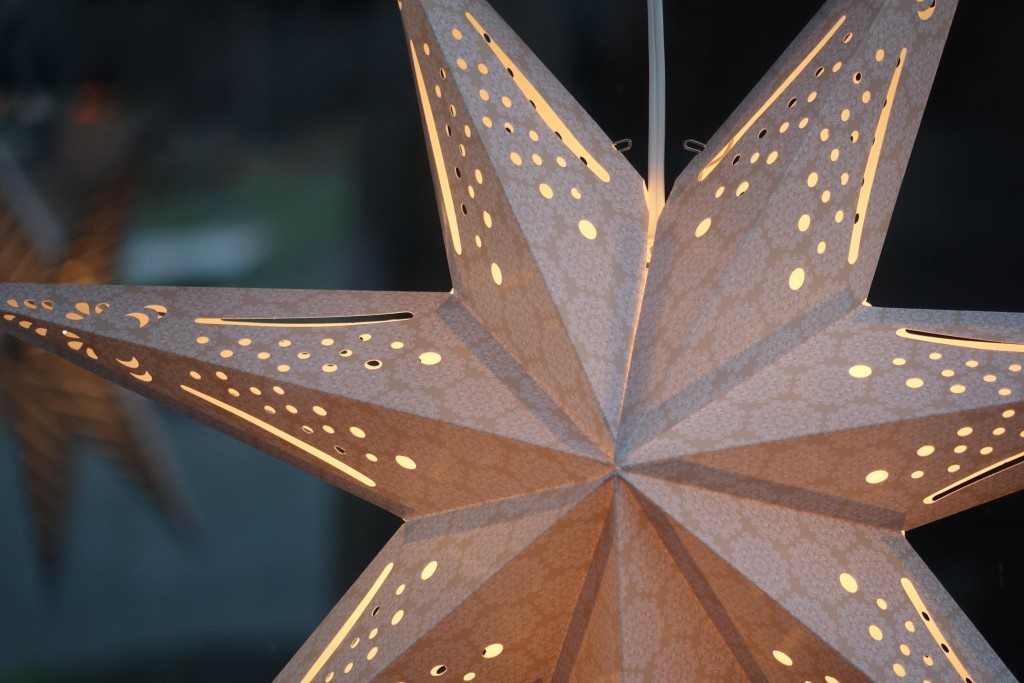Yesterday was the first Sunday in Advent, and for Christians, this is the beginning of the New Year. For those of you not familiar with this, the first season in the Christian church’s calendar, Advent is a season of watching, waiting, and preparation. During these four weeks before the twelve days of Christmas, (which traditionally start on Christmas Day and not the twelve days before Christmas), Christians are asked to take seriously what it would mean for Christ to be born in our hearts. We are asked to prepare for the Light to enter us, and through us to enter the world. We are asked to remember what it was like more than 2,000 years ago for an infant to be born in exile, and the trust that it took for his family to be obedient to God. It was no easy task.
 Some of us Christians use an Advent wreath to mark the days and weeks leading up to Christmas. Each day we light a candle and pray or use a meditation designed for the season. Over the years, the four candles on the wreath have come to symbolize virtues of a moral, spiritual life. These virtues, represented by the candles, are hope, love, joy (the pink candle), and peace. The center candle, the Christ candle, is lit on Christmas day and for the twelve days following. Our tradition tells us to meditate on these virtues and to tune our hearts to them daily. Practicing virtues is a bit like practicing scales on the piano or practicing a tennis serve. You do it and do it and do it until you don’t have to think about it; until the muscle memory does it automatically. Then your heart is properly calibrated.
Some of us Christians use an Advent wreath to mark the days and weeks leading up to Christmas. Each day we light a candle and pray or use a meditation designed for the season. Over the years, the four candles on the wreath have come to symbolize virtues of a moral, spiritual life. These virtues, represented by the candles, are hope, love, joy (the pink candle), and peace. The center candle, the Christ candle, is lit on Christmas day and for the twelve days following. Our tradition tells us to meditate on these virtues and to tune our hearts to them daily. Practicing virtues is a bit like practicing scales on the piano or practicing a tennis serve. You do it and do it and do it until you don’t have to think about it; until the muscle memory does it automatically. Then your heart is properly calibrated.
Practicing virtues is a bit like practicing scales on the piano.
During Advent in my childhood home, every night at the dinner table we lit a candle on our Advent wreath and read a devotion. Each day we also put up an aluminum foil star in our big picture window. When it was my turn to put up the star, (with Scotch tape that seemed to never come off the window) my mother would remind me why we are putting up a star. “Jesus came in to the world to shine light in the darkness. Christmas is about Jesus and His light,” or some such sentence. I remember my junior high Sunday School teacher giving us another sentence. “Boys and Girls, this is not just a countdown to opening presents on Christmas day.” WHAAT???? I had already been snooping around to see if I was going to get the violin I was hoping for. The adults continued to point us in the right direction, though. On Sundays when we got home from church we put up an extra big aluminum foil star, so by the end of the Advent season, we had put up 24 little stars and 4 extra large stars. To my young eyes, these stars made our window shine.
These rituals are what I like to call “holy habits.” You might have some of your own holy habits. Perhaps  you spend a few minutes every day with a practice of gratitude. Perhaps you read from your holy scriptures and pray. Perhaps you attend 12-step meetings daily or weekly. Perhaps you routinely walk in the woods or by the river and let your mind take in the beauty of creation. Maybe you are a faithful journal writer. Why are these holy habits important? Because holy habits re-calibrate our hearts.
you spend a few minutes every day with a practice of gratitude. Perhaps you read from your holy scriptures and pray. Perhaps you attend 12-step meetings daily or weekly. Perhaps you routinely walk in the woods or by the river and let your mind take in the beauty of creation. Maybe you are a faithful journal writer. Why are these holy habits important? Because holy habits re-calibrate our hearts.
Holy habits re-calibrate our hearts.
Last week’s blog by Rhea was about loving anyway, even when love loses. It is an important read. Today we are talking about how we recognize what real love looks like. How do we know it when we see it? Feel it? How do we learn to love? Not the Hallmark, sentimentalized love, but love that is self-abnegating, love that washes away the ego and is aligned with the heart’s desire for a deeper, more purposeful way to live. (I believe we all have this desire.)
It is easy to be seduced by habits of the world. We are, all of us all the time, participating in cultural/secular traditions, liturgies, and activities that form and perhaps mostly deform our heart’s truest values. It is easy to be lured and distracted by thoughts and actions that, if we take stock, aren’t our highest desires for ourselves or our world. The pull is great for all of us. We catch some kind of spiritual and relational amnesia when we are immersed in the secular world for too long. We are not even aware that it is happening. We start believing that Christmas is mostly about presents, food, alcohol, and our insular nuclear family. Black Friday is another great example of a cultural liturgy that teaches us that getting a great bargain on a wished for item is the most important thing we will do on this day.
We catch spiritual and relational amnesia when we are immersed in the secular world for too long. Click To TweetEach of our hearts need to be re-calibrated from time to time. It seems like mine needs it often, weekly if not daily. I need the reminders, the holy habits, to keep my heart fine tuned to the virtues and spiritual truths I believe in. In this messy, seductive world, it might just help to employ some holy habits to keep your heart pointed in the right direction. If your life needs more “marvelous” and less “messy”, take this skill seriously. Develop holy habits that help you desire the holy things in life, holy habits that help you discern what is real, good, just, and noble, from the lure of worldly things. Holy habits, practiced day after day, form a heart that reflexively and yet paradoxically “puts on the mind of Christ”, as we Christians are implored to do. (1 Corinthians 13-16) Holy habits form a heart that is not conformed to the world but a heart that is transformed. (Romans 12:2). You know your heart is properly calibrated when you reflexively live the way you know you are being called to live. You know your heart is properly calibrated when you do the right thing, even when it is the hard thing, and you feel the alignment with your highest and holiest desires.
Each of our hearts need to be re-calibrated from time to time.
I am ending with a poem that is one of my favorites, and I especially love reading it during Advent. I hope you enjoy it. Will you work with me to develop the holy habits needed for love to take the risk of birth?
Amy
The Risk of Birth
This is no time for a child to be born,
With the earth betrayed by war & hate
And a comet slashing the sky to warn
That time runs out & the sun burns late.
That was no time for a child to be born,
In a land in the crushing grip of Rome;
Honor & truth were trampled to scorn—
Yet here did the Savior make His home.
When is the time for love to be born?
The inn is full on the planet earth,
And by a comet the sky is torn—
Yet Love still takes the risk of birth.


I especially love this one!
Thanks so much, Salley!
I really like this Amy. I think fear (any kind) plays a big part in developing holy habits or transformation. Getting unstuck in the secular world…